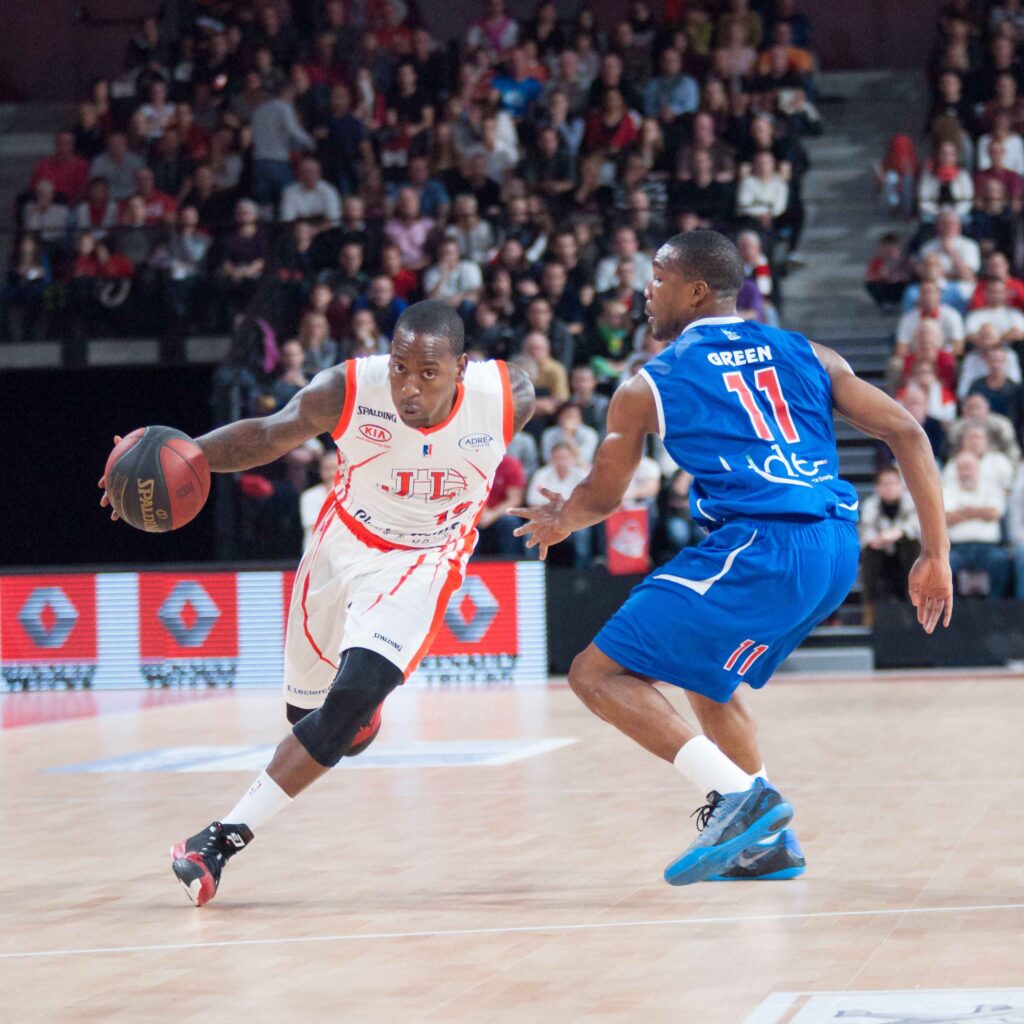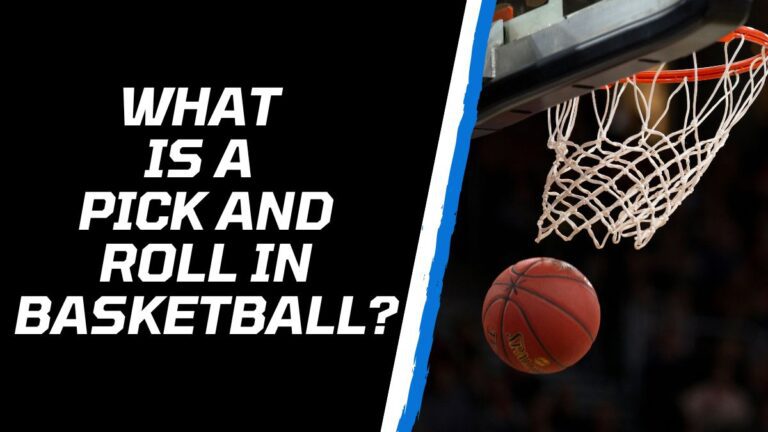What is a Turnover in Basketball? Everything You Need to Know
In the fast-paced world of basketball, turnovers play a crucial role in shaping the game’s outcome. In this blog post, we’ll dive deep into ‘What is a turnover in basketball?’. We will try to understand turnovers with everything you need to know as a basketball fan or a player. So, without further ado, let’s explore the essence of basketball turnovers together.
What is a turnover in basketball?

In basketball, a turnover refers to the loss of possession of the ball by the offensive team to the defensive team. This occurs when a player from the offensive team makes a mistake, leading to the opposition gaining control of the ball. Turnovers can happen in various ways, such as errant passes, offensive fouls, traveling violations, and stepping out of bounds.
When a turnover occurs, it not only denies the offensive team the opportunity to score but also grants the defensive team a chance to launch a counterattack. As a result, turnovers can have a significant impact on the momentum of the game. Coaches emphasize reducing turnovers as they directly influence the team’s chances of success and often lead to easy points for the opponents.
Different Types of Turnover
There are many different types of turnovers in basketball. Some of the most common types include:
- Ball stolen: This is when the opposing team takes the ball away from a player on your team.
- Stepping out of bounds: This is when a player touches the ball or their foot touches the out-of-bounds line.
- Intercepted pass: This is when a player on the opposing team catches a pass that was intended for a player on your team.
- Double dribble: This is when a player dribbles the ball twice without stopping.
- Traveling: This is when a player takes more than two steps without dribbling the ball.
- Shot clock violation: This is when a team fails to shoot the ball before the shot clock expires.
- Backcourt violation: This is when a player on the offensive team enters the backcourt with the ball before the ball has been passed over the midcourt line.
- Three-second violation: This is when a player on the offensive team remains in the restricted area for more than three seconds without dribbling or shooting the ball.
- Five-second violation: This is when a player on the offensive team takes more than five seconds to inbound the ball.
- Offensive foul: This is a foul committed by the offensive team.
It is important to be aware of the different types of turnovers so that you can avoid them and help your team win games.
Common Causes of Turnover in Basketball
There are many common causes of turnovers in basketball. Some of the most common include:
- Poor ball handling: This is when a player does not have good control of the ball, which can lead to them being stripped by the opposing team or making a traveling violation.
- Careless passing: This is when a player passes the ball without looking or when they pass the ball to a player who is not in a good position to receive it.
- Overdribbling: This is when a player dribbles the ball too much, which can lead to them losing control of the ball or being called for a traveling violation.
- Poor decision-making: This is when a player makes a bad decision with the ball, such as passing the ball into traffic or taking a bad shot.
- Pressure from the defense: Sometimes, turnovers can be caused by the pressure of the opposing defense. If a player is feeling rushed or under pressure, they are more likely to make a mistake with the ball.
Why are turnovers bad?

Turnovers are bad for a number of reasons. First, they give the opposing team possession of the ball, which gives them a chance to score. Second, turnovers can disrupt the flow of a team’s offense. Third, turnovers can lead to easy baskets for the opposing team. Finally, turnovers can demoralize a team and make it difficult to win games.
In conclusion, turnovers are a major problem in basketball. Teams that commit a lot of turnovers are more likely to lose games. Therefore, it is important for players to be aware of the common causes of turnovers and to take steps to avoid them.
How many turnovers are too many?
The number of turnovers that is too many depends on a number of factors, including the level of competition, the pace of the game, and the team’s overall offensive efficiency. However, as a general rule of thumb, teams should strive to limit their turnovers to around 15 per game.
For example, in the NBA, the average number of turnovers per game in 2022-23 was 15.2. The team with the fewest turnovers was the Golden State Warriors, with an average of 13.2 turnovers per game. The team with the most turnovers was the Oklahoma City Thunder, with an average of 17.8 turnovers per game.
Of course, there are some teams that are more turnover-prone than others. For example, teams that rely on a lot of fast-paced offense are more likely to turn the ball over. However, even teams that play a more deliberate style of offense should still strive to limit their turnovers.
Ultimately, the number of turnovers that is too many depends on the specific situation. However, as a general rule of thumb, teams should strive to limit their turnovers to around 15 per game.
Who Has The Most Turnovers in NBA History?

The player with the most turnovers in NBA history is Rajon Rondo. Rondo has 4,050 turnovers in his career, which is more than any other player in NBA history. Rondo is a pass-first point guard who has always had a high turnover rate. However, he is also a very good playmaker who has led his teams to a lot of success.
Here is a list of the top 10 players in NBA history with the most turnovers:
- Rajon Rondo (4,050)
- John Stockton (3,850)
- Jason Kidd (3,439)
- Magic Johnson (3,341)
- Isiah Thomas (3,200)
- Deron Williams (3,048)
- Chris Paul (2,960)
- Steve Nash (2,846)
- Clyde Drexler (2,834)
- Chauncey Billups (2,827)
As you can see, most of the players on this list are point guards. This is because point guards are typically responsible for handling the ball and making decisions with the ball. As a result, they are more likely to turn the ball over.
However, it is important to note that turnovers are not always a bad thing. In some cases, a turnover can be a result of a good pass that was just intercepted by the defense. Additionally, some players are willing to take risks with the ball in order to create scoring opportunities. As a result, they may turn the ball over more often, but they may also create more scoring opportunities for their team.
How to Prevent Turnovers?

There are a number of things that players can do to prevent turnovers. Some of the most important tips include:
- Be aware of your surroundings: This means being aware of where the defenders are and where your teammates are. If you are aware of your surroundings, you are less likely to make a mistake with the ball.
- Make good passes: This means passing the ball to a teammate who is open and in a good position to receive the pass. If you make good passes, you are less likely to turn the ball over.
- Don’t dribble too much: Dribbling too much can lead to turnovers. If you find yourself dribbling too much, try to pass the ball or shoot the ball.
- Take care of the ball: This means being careful with the ball and not making careless mistakes. If you take care of the ball, you are less likely to turn it over.
Here are some additional tips for preventing turnovers:
- Practice ball handling: The more you practice ball handling, the better you will become at controlling the ball. This will help you avoid turnovers.
- Watch film: Watching film of yourself or other players can help you identify areas where you are turning the ball over. This will help you make changes to your game and prevent turnovers.
- Get feedback from coaches or teammates: Your coaches and teammates can give you feedback on your ball handling and passing. This feedback can help you identify areas where you need to improve.
Final Thoughts
Turnovers are a major problem in basketball. Teams that commit a lot of turnovers are more likely to lose games. Therefore, it is important for players to be aware of the common causes of turnovers and to take steps to avoid them. By following the tips in this article, you can help your team reduce turnovers and win more games.
Here are some more articles that you can check out:







